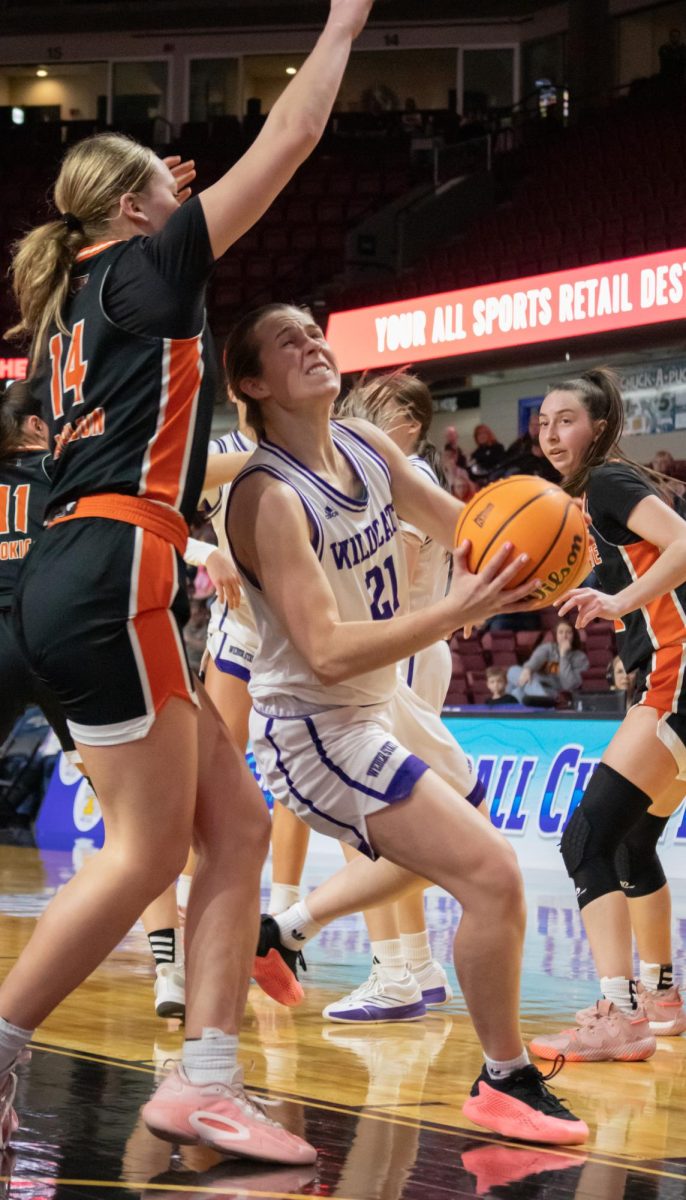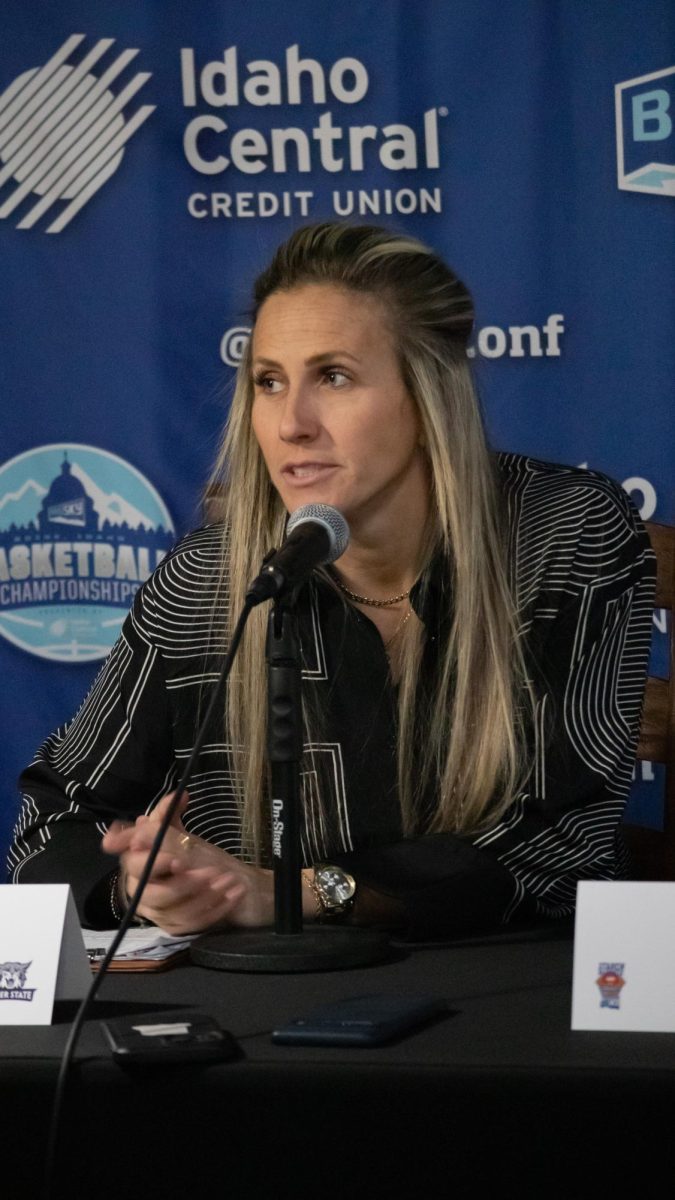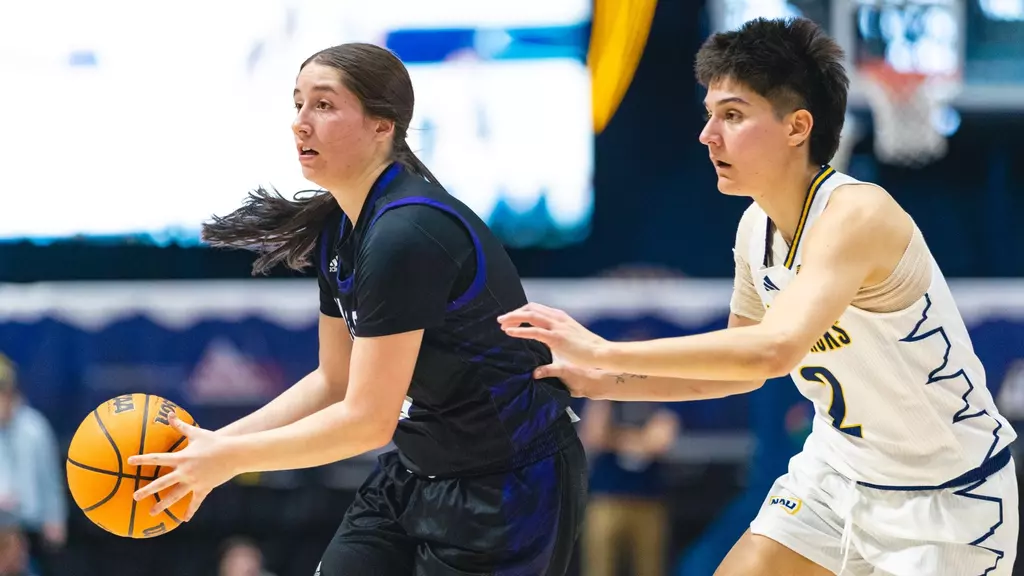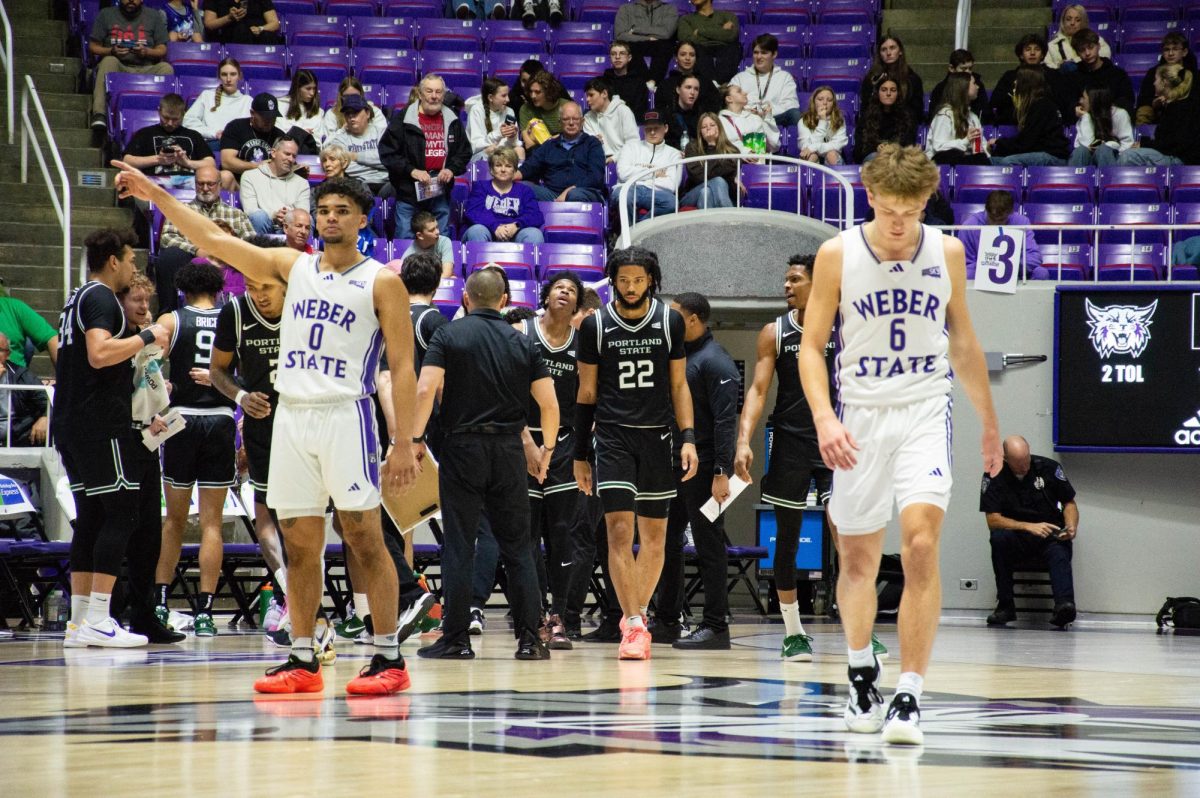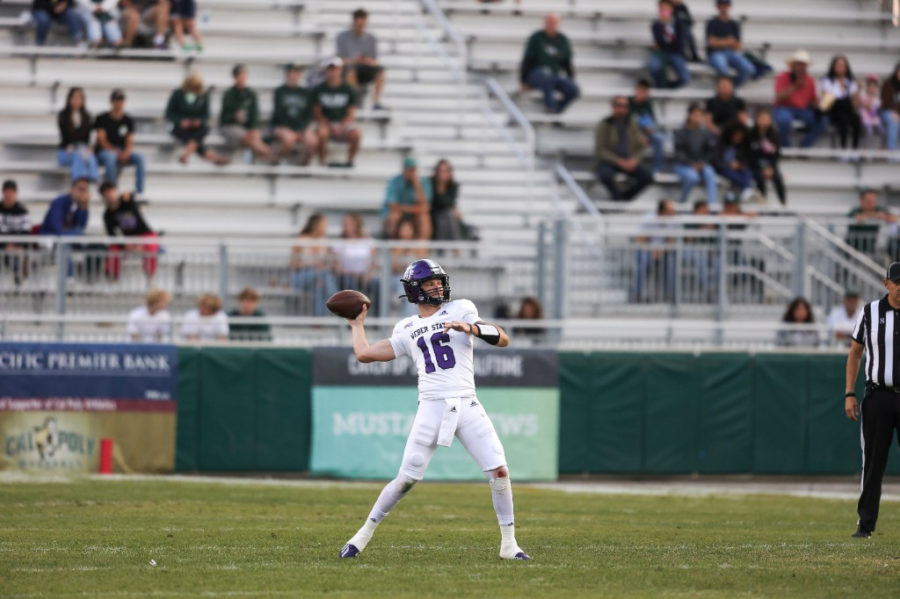During the first half of the Weber State home men’s basketball game against Sacramento State on Feb. 2, Jerrick Harding stole the ball from an opposing guard and led the Wildcats on a fast break. As Harding drove the lane, instead of cutting to the basket, all of the other Wildcats ran to a different spot behind the three point line.

Harding passed the ball to left, and then the ball swung around the perimeter for an open 3-point attempt by junior power forward Brekkott Chapman. In the moment before Chapman shot the ball, all five Wildcat players were behind the 3-point line.
For good measure, he made the shot.
This is just one example of how analytics is changing the game of basketball. Just ten years ago, if this same play occurred, the player taking the three would likely have been pulled from the game for taking an unnecessarily bad shot.
“The advantage of using analytics is that you can get both the team and player to be as efficient as possible,” said Weber State lead assistant coach Eric Duft. “Efficiency is all about maximizing the chance of each shot going in.”

The use of analytics has become more and more predominant in basketball. The concept is to take emotions out of the game and to focus on what the numbers and math are saying about how it should be played. So, what is it
telling us?
Offensively, it is stressing the importance of taking shot attempts as close to the rim as possible, or from 3-point range, while eliminating everything in between. This is based off the typical shooting percentages from
those ranges.
According to NCAA Stats, the average 2-point shooting accuracy is 46 percent, while the 3-pointers go through the net an average of 37 percent of the time. If two players attempt 100 shots each, with one only taking threes and the other taking twos, based on the typical averages, the one taking threes would outscore the other 111 to 92.
The effects of these anayltics have been on full display at Weber State. Ever since Randy Rahe was appointed the head coach in 2006, Weber State has been a leader in the country in three-point shooting.
In 2005, Weber attempted 388 threes, which ranked 324 out of 330 Division I college basketball teams in the country. The number immediately grew with Rahe, and by 2008, the Wildcats attempted 631 threes during the campaign.
Think about that for a second: over the course of just three years, they were attempting around 250 additional threes per season. Since that 2008 season, Weber has only once failed to clear 600 triples attempted in a season, and they have twice cleared 700.

A critical part of this shift has been driven by offensive assistant coach Eric Duft, who joined the program in 2006 alongside Rahe.
Duft is known as the “analytic guru” in the coach’s office, and he provided valuable insights on the use and importance of analytics at Weber.
“What you’re trying to do is increase your efficiency on both ends of the court, offensively and defensively,” Duft said, “trying to take what you are seeing with your eyes and then looking at the numbers to see if you are seeing the same things. We do that a lot here.”
They focused on two primary changes on the offensive side of the ball: getting shots at the basket and stressing the importance of the three.
“The old style was just to try and take a good shot, but we didn’t really have the numbers to say what a good shot was,” Duft said. “Now we know that some shots are better than other shots. Now we know specifically the shots we want to take on offense and the ones we want to take away on defense.”
While 3-pointers are all the rage nowadays, getting a shot at the basket is still more valuable, because it is made at such a high rate – especially if attempted by a big man.
This type of data isn’t tracked at the college level, but as a reference, but both Rudy Gobert and Derrick Favors of the Utah Jazz are finishing above 74 percent when attempting a shot within 3-feet of the basket.

“One of the least efficient shots in basketball is the post-up, so we’ve worked with bigs like Zach Braxton to find more efficient ways to get them involved. One way is to put them into the pick and roll and get them dunks and shots at the basket by being the roll man,” Duft said.
Weber State now focuses their scouting efforts on prospects that match this analytic profile. Coaches want guards who are capable shooters with the ability to get to the basket, and forwards and centers who can either stretch the floor by shooting threes or who are strong rollers to the basket.
When Zach Braxton was recruited out of high school, he was recruited by Weber State specifically because he was a high efficiency player.
Braxton said that he loves being able to back a player down, and trying to score on his defender with a variety of post moves, but he realized that that is not a high percentage shot.
“I’ve talked to Coach Rahe, and the best ways I’ve scored in the last two seasons has been scoring out of the pick and roll, and playing in the short corner to get dump off passes for easy dunks,” Braxton recalled.
He explained that short corner is also called “The Gutter,” and it allowed him to be one of the leaders in the Big Sky for made dunks in a season. As a Weber State guard drives to the basket and Braxton’s defender slides over to provide help defense, he would make himself available for easy shots at the basket.
One of the surprising ways Weber State has tried to improve through the use of analytics has been on the defensive side of the ball. Just like there are smart shots to take on offense, there are smart shots to force an opponent into on defense.
In coach Duft’s office was a big sign with the words, “No Threes. No Paint. Contest Every Shot.” This is the defensive philosophy of an analytically conscious coaching staff.
In 2012, Weber State enlisted the assistance of Ken Pomeroy, who is the creator of the college basketball stats website kenpom.com and currently works for the Utah Jazz analytic department.
“I have always been fascinated by the story that numbers can tell and was doing this before it was cool,” Pomeroy said. “I live in Utah and was happy when Weber State reached out to pick my brain.”
Without even watching a basketball game, Pomeroy was able to look at the numbers on his site to determine that there was one glaring weakness for the Wildcat defense.
At the time, Weber State was leading the Big Sky Conference in defensive field goal percentage, but they were not a good defensive team.
“We asked Ken to take a look at our stuff to see if he could help out,” Duft recalled. ”Without even watching any game film, he looked at the numbers and found that we were giving up way too many 3-point attempts.”
He explained that teams in the Big Sky Conference have long taken and made more threes than any other conference in the country, so they had to build a defense around that setting.
“We changed our entire defensive philosophy from what he told us,” Duft said. “You can’t necessarily control how well a team shoots, because some of that is just on the talent of the player…but you can eliminate the attempts. We learned that by eliminating the attempts, you are eliminating the chance of them making more threes per game.”
Since the change, Weber State has led the entire NCAA in 3-point attempts allowed per game on three separate occasions, and they have never been below 20th.
While the numbers and analytics can be fascinating, the goal of any team is always to win. So has this analytic focus led to winning?
Since taking over at Weber State, Randy Rahe has gone 266–153, a win percentage of .653. Weber has had the best record in the Big Sky five times, they have won the conference tournament three times and they have made three NCAA Tournament appearances.
While Duft has been a leader of this analytic movement here at Weber State, he was quick to point out that winning is always going to be about more than just numbers.
“There is a place for analytics, but there is also a people component,” Duft said. “You can definitely take it too far, because at the end of the day you still need the guys with the courage late in games to take and make these shots.”
As former Detroit Piston guard and current Hall of Famer Isiah Thomas once said, “The secret of basketball…is that it’s not about basketball.”
Weber State has worked hard to recruit not only the most talented players, but athletes who are high character people.
“You have to have guys who are competitive and passionate. You have to have a chemistry to your team where they enjoy each other,” Duft said. “Basketball is too much of a team sport to have it be all about the numbers.”


